William Gregg built the first mill in the South in the town of Graniteville, South Carolina in 1845 and hence the name of The Graniteville Manufacturing Company. The name of the community originates from the use of local blue granite it its buildings.
Graniteville Company became a self-contained community providing housing, schools, maintenance, etc for its residents who also worked for the company. During this time, unemployment was not something folks worried about. As the years passed, demand dictated construction of new plants. This included two mills in Augusta, Georgia and several more in Graniteville as well as the surrounding towns of Vaucluse and Warrenville, South Carolina.
Think about it: by the time of the Civil War, Graniteville Co was 16 years old. Graniteville Co survived the dark days of the Civil War. The Gilded Age came and went, Henry Ford and the Wright brothers did their contribution to humankind and Graniteville Co continued to grow. World War I came and went, Prohibition made its mark and the Great Depression took its toll meanwhile the Graniteville Co soldiered on producing quality fabrics. Along came World War II followed by decades of prosperity where growth prevailed.
The 80’s saw new changes such as corporate raiders and outsourcing to cheaper labour markets. During this time Graniteville Co was not immune to the “hostile takeover” that defined the decade of the 80’s being taken over by parties endorsing Gordon Gekko’s mantra that “greed is good”. The hard-earned coffers of the retirement plan were just too tempting and attractive to these new “investors” such as Victor Posner. It took the Federal Government to straighten things out and eventually a 401k replaced the former pension plan. Then the 90’s arrived and a new suitor entered the picture in the form of Avondale Mills buying all Graniteville Company’s assets. It is ironic then, that after all this illustrious history, a train derailment gave the death-blow to a hard-earned and long tradition of proudly made products.
 On January 6, 2005 a mistake resulted in the train derailment of many tankers loaded with chlorine. From the damaged tankers a cloud of toxic chlorine gas (used in WWI as a weapon of mass destruction, no less) permeated the area. In the aftermath, nine people lost their lives along with many injured from breathing the toxic fumes. Scores required evacuation from their homes to prevent further exposure. The damage was just too large and after the Graniteville Train Crash took place, the former Graniteville Company eventually closed its doors for good.
On January 6, 2005 a mistake resulted in the train derailment of many tankers loaded with chlorine. From the damaged tankers a cloud of toxic chlorine gas (used in WWI as a weapon of mass destruction, no less) permeated the area. In the aftermath, nine people lost their lives along with many injured from breathing the toxic fumes. Scores required evacuation from their homes to prevent further exposure. The damage was just too large and after the Graniteville Train Crash took place, the former Graniteville Company eventually closed its doors for good.
Today all that is left is a group of abandoned buildings slowly aging away to nothing. This once vibrant community is totally quiet now, a contrast to the days when these plants operated around the clock staffed by one of three daily shifts. The only time when this eery silence permeated the town was during July 4th week and Christmas week when the plants would shut down for maintenance. This also gave hourly workers a break in the form of a vacation. Many local families owed their livelihood to wages earned at Graniteville Co and the local economy prospered. All this came to an end when the doors closed.
I took the following photo album this past weekend. It shows some of what Graniteville Company looks like today…
Hickman Hall and the Main Office
Hickman Hall (the tall two-story building in the following gallery) housed the employment office and the nurse’s station. This building has beautiful wooden floors and dates back to 1907 erected in “affectionate remembrance of Hamilton Hickman president from 1867 to 1898“. I wonder how many modern CEO’s or CFO’s would be honored with buildings in “affectionate remembrance”? But I digress; as you can see in today’s picture it looks far from what it used to look like. Every employee of Graniteville Co walked through this building at one time or another. In the basement was the nurse’s station and there a minor “physical” was given to new hires. They even had a booth where one’s hearing would be checked!
Then the more modern building with the red roof is the Main Office. This is where the suits used to have their offices. Left of the double glass doors of the Main Office (with the two columns) was the main board room.
Graniteville Company’s Divisions
Many divisions (or mills) made up Graniteville Company. Each division had its own building and all had their own name. Hickman, Townsend, Swint, Vaucluse, Warren produced greige goods. Woodhead and Gregg were finishing plants. Enterprise and Sibley produced indigo goods.
The crown jewel finishing plant was Gregg Division. Through its many dye-ranges cloth would be dyed from light to dark to the tune of about 2.2 to 2.5 million yards of cloth per week. Do the math, that is a lot of cloth! Today, Gregg Division is nothing like it used to look like. Windows broken, the main entrance door is not locked anymore, the loading docks are a shamble and the parking lots once bustling with life are now overgrown with weeds…
Warren Division was special during Christmas time. Workers built a wooden structure in the shape of a star. This “star” was also fitted with lights that would be lit up only during Christmas. However, for the rest of the year the little star was never brought down. It is there no longer…
Back in the 80’s the rage in the fashion world was the “stone washed” jeans. The special look achieved by washing jeans in special industrial sized washing machines along with pumice rock. Warren Division underwent an upgrade with that type of washing machines – no telling what ever happen to them.
Next is Vaucluse Division, in the little town of Vaucluse, SC. The building dates back to 1950. This mill produced narrow width goods which means the looms used here were old technology and produced a narrow roll of cloth. During the 80’s to maximize profits buyers started demanding wider rolls of cloth which required modern wider air-jet looms. Needless to say, the investment was quite high. There is no telling what ever happened to all that equipment. This is what Vaucluse looks like today:
I suppose Vaucluse is the most “abandoned” of all the mills. There is a certain finality to the way this place looks like today, with the empty phone booth. It makes you wonder..How many calls were made from there? Was it good news, bad news, emergencies, joy and sadness… Then the four empty chairs look spooky next to the entrance’s awning frame – one can only imagine what it was like on a normal workday. Who was the last person to sit on those now empty bucket seats?
Data Processing Building
The last photos show what is left of the Data Processing Building. Here powerful Burroughs and later Unisys mainframes kept track of inventory, payroll, reports, accounting, you name it. In the days before PC’s this building housed the latest equipment. The train derailment took place just feet away from the back parking lot next to this building. Damage here was irreparable and for many, many years this building had a sign declaring it as “condemned”.
The Future
The glimmer of hope about all this is that there are plans for some of these buildings. While taking these photos, I had a chance to meet a gentleman describing himself as one of the group of current owners of the property. He told me there are plans in the works of taking some of these buildings and remodeling them for housing purposes. There has been also re-investment in the Woodhead Division finishing plant and this been spun up as a separate company.
While the glory days of Graniteville Company have faded in the past there is an optimism for the initiatives I mentioned above. However, it is just sad to see how a workplace that endured so much through so many years has ended up in such a state… Then again, one could argue this is a casualty of progress.









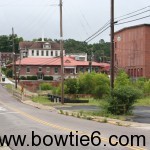

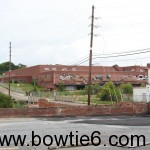

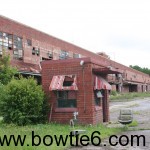

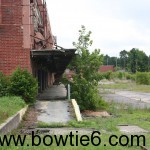


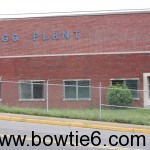

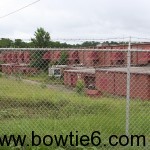

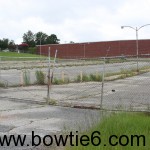
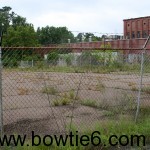
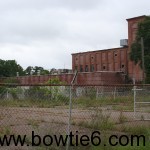
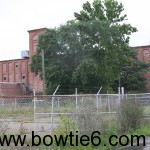
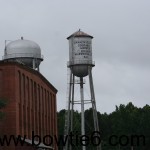
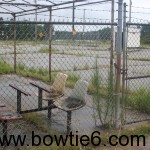





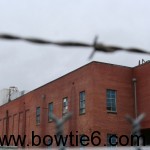

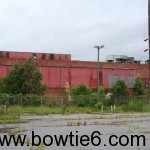
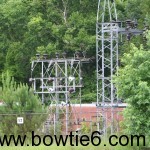





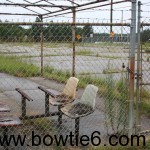


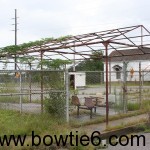
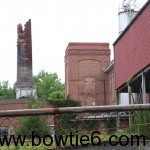
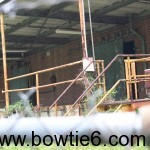


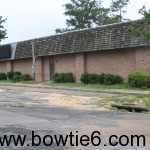
i spent 17 years working at gregg plant. i left in april of 2004 i lost several friends in the accident and i know people who still struggle with health problems it was a good place to work
I spent 17 of the best years of my life employed by Graniteville. Does anyone know how to get in touch with whomever might be responsible for administering whatever pension funds might remain?
Sorry man, I have no idea about your question…
It was great while it lasted.
What happen to Graniteville Mill Pension Fund. Who is the Plan Administrator and are there funds available or did it get taken over by the government?
Sorry Grover, but I have no idea what the current status of that is.
I also very much blame NAFTA known as the North American Free Trade Act more than any single thing for the death and destruction of an entire Industry of several very large mills all throughout the entire Aiken County/ Augusta GA area! I travel past these once powerful manufacturing facilities and look at them all shut down and slowly fading away because of the failed policies to protect manufacturing in the USA.
We need to protect American Manufacturing and bring the jobs back to Aiken County and all of America!!!
It’s a shame what that derailment did. It affected so much more than just 9 random lives. It destroyed some families, the mill industry, and the economic future for the entire area. I understand human nature is to blame, and Norfolk Southern ended up paying a whole lot in fees, fines, and lawsuits, but the fact remains things will never be the same. Even the entire NS rail culture is on pins and needles every day, because they never know when human error may strike again.
Thank you for your comment Bill. The derailment did indeed cause a great deal of hardship in that community. It is sad actually, Graniteville used to be a very busy town, with all kinds of activities going on. Unfortunately like many other Southern towns the entire economy and well-being centered around one employer/industry. I suppose the same can be said of small towns in the North where steel was king. Once the steel mill closed, the down died with it.
Having spent my formative years growing up in Augusta, GA in the 60’s/70’s – I sure remember The Graniteville Company! Nice piece Joe….
I did not realize that!! Thanks for visiting Michael!